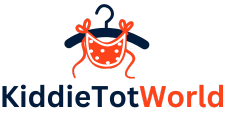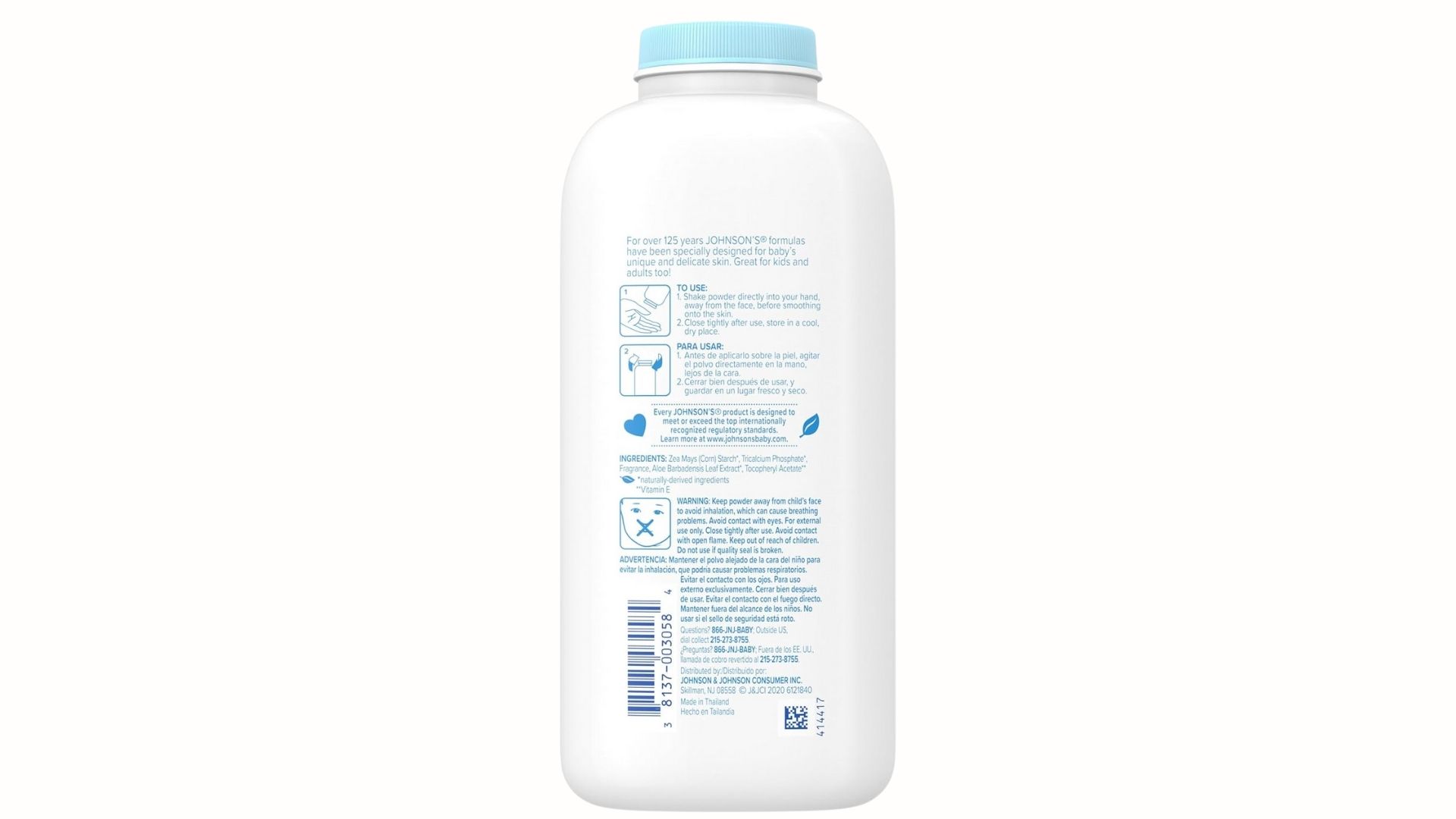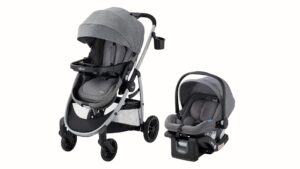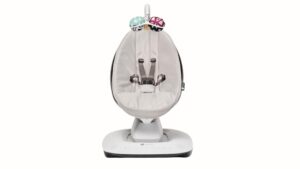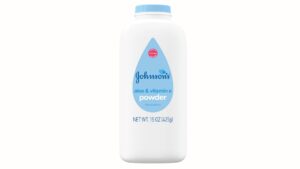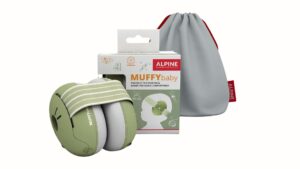Johnson’s Baby Powder Review: Is It Still Safe and Worth Using in 2025?
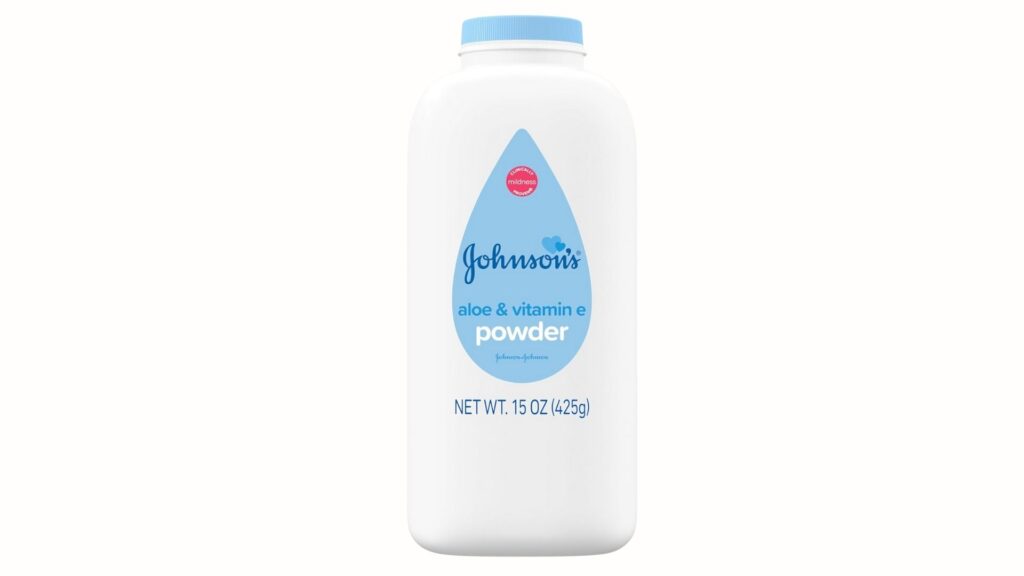
Johnson’s Baby Powder has been a household name for decades, trusted by parents worldwide for keeping babies dry, fresh, and comfortable. However, recent years have raised questions about its safety, particularly regarding talc-based formulas and potential health risks. With evolving product formulations and growing competition from alternative baby powders, many parents are now reconsidering whether Johnson’s Baby Powder remains a safe and effective choice in 2025. This review dives into its ingredients, performance, and safety to help you decide if it’s still worth using today.
Table of Contents
Johnson’s Baby Powder in 2025
Johnson’s Baby Powder has long been a trusted choice for parents seeking gentle, reliable care for their infants. With decades of history, it remains a staple in nurseries worldwide. In 2025, many parents are increasingly cautious about the safety and ingredients of baby care products. A common question is, “Is Johnson’s Baby Powder safe?” With the availability of talc-based and talc-free baby powder formulas, understanding its safety is essential.
Parents search online for Johnson’s Baby Powder review, comparisons, and personal experiences before purchasing, especially when it comes to infant products. Johnson’s Baby Powder review often praises its softness, moisture absorption, and mild scent, which help keep babies comfortable throughout the day.
Talc-free baby powder alternatives are now widely available, providing similar benefits while addressing potential health concerns. Many parents research Johnson’s Baby Powder ingredients to make informed choices for their infants. Despite safety debates, Johnson’s Baby Powder 2025 remains effective for sensitive skin, diaper rash prevention, and everyday freshness. Parents also compare it to other Johnson’s Baby Powder alternatives to determine the best option for their family. This review explores Johnson’s Baby Powder’s performance, safety, and practicality in today’s context. By examining real experiences, expert opinions, and product details, parents can decide whether it’s worth using today. Ultimately, Johnson’s Baby Powder continues to offer convenience, familiarity, and reliable results for families preferring trusted baby care products in 2025.
Pros:
- Gentle on Skin: Johnson’s Baby Powder is soft and soothing, ideal for babies with sensitive skin.
- Moisture Control: Helps keep skin dry, reducing friction and preventing diaper rash effectively.
- Trusted Brand: Decades of reliability make Johnson’s Baby Powder 2025 a go-to for many parents.
- Pleasant Fragrance: Leaves babies smelling fresh without an overpowering scent.
- Versatile Use: Suitable for infants and toddlers; even adults can use it for chafing or moisture control.
Cons:
- Talc Concerns: Talc-based formulas may pose inhalation risks if applied improperly.
- Skin Sensitivity: Some babies may experience mild redness or irritation with talc-based powders.
- Inhalation Risk: Extra care is needed to avoid powder entering a baby’s nose or mouth.
- Preference for Natural Products: Many parents prefer talc-free baby powder or natural Johnson’s Baby Powder alternatives.
- Limited Moisturizing Benefits: While it absorbs moisture, it doesn’t hydrate or nourish the skin.
History and Popularity of Johnson’s Baby Powder
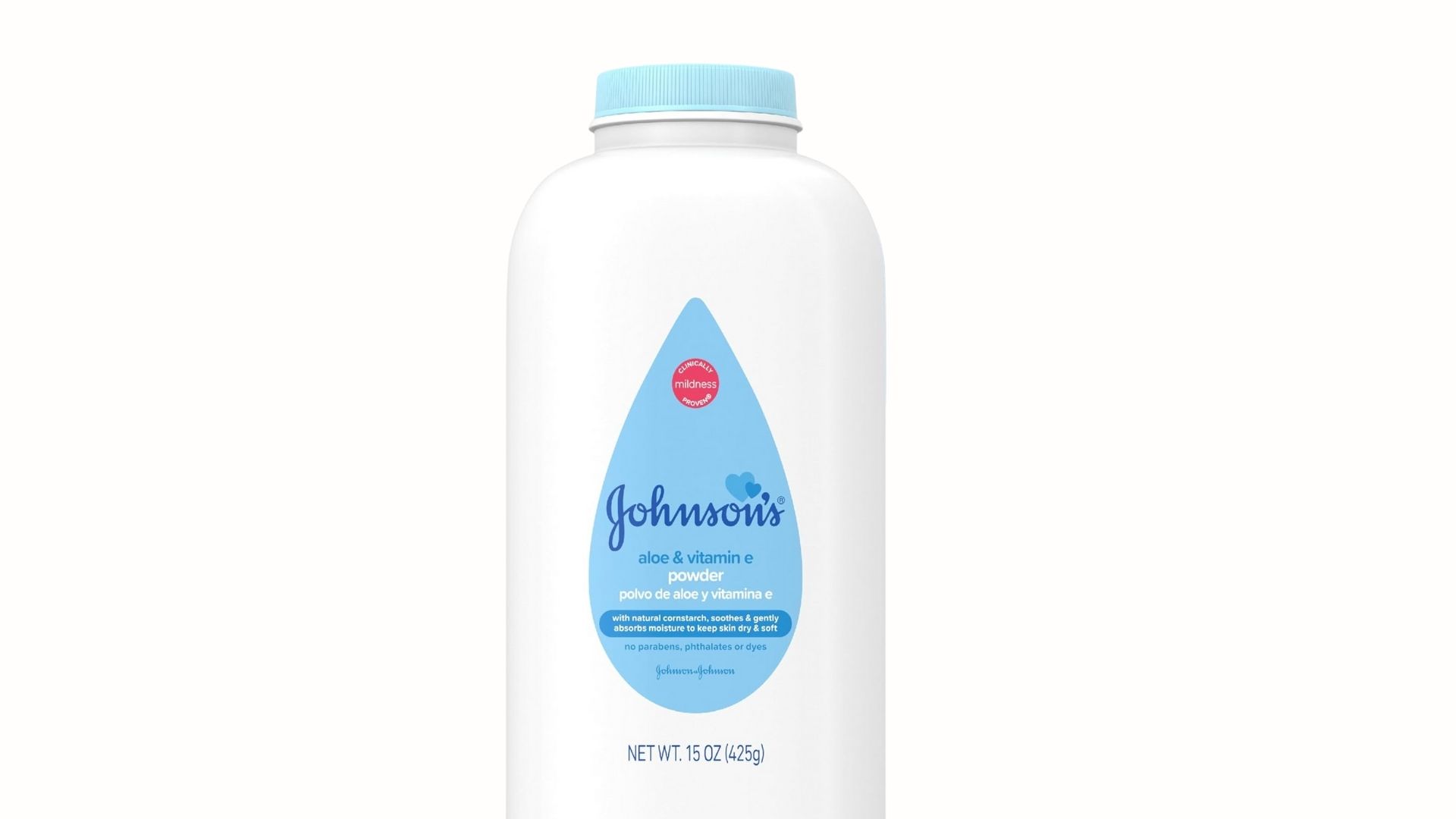
Johnson’s Baby Powder has been a household staple for over a century, known for its gentle formula and ability to keep infants dry. The brand gained recognition due to its trusted reputation and consistent quality. Parents appreciated its soft texture, mild fragrance, and skin-friendly ingredients, making it a go-to solution for everyday infant care. Over time, Johnson’s Baby Powder became synonymous with gentle, effective baby care.
The product originally contained talc, which was considered safe for decades. Parents worldwide relied on it to prevent diaper rash, reduce friction, and maintain comfort. With decades of consistent use, Johnson’s Baby Powder became one of the most recognizable baby care brands. Many families continue to search for Johnson’s Baby Powder review to confirm whether the product meets modern safety standards. In 2025, discussions around talc safety have influenced purchasing decisions, encouraging some parents to explore Johnson’s Baby Powder alternatives.
Despite evolving concerns, the brand has adapted, introducing talc-free baby powder and natural formulas to meet modern expectations. Johnson’s Baby Powder 2025 retains its popularity due to a combination of brand trust, effectiveness, and ease of use. Parents continue to compare it with other baby powders, searching for options that best suit sensitive skin and infant needs. Understanding its history and widespread use helps parents appreciate Johnson’s Baby Powder’s enduring relevance and continued appeal in modern baby care.
Ingredients Breakdown: Talc vs. Cornstarch
Understanding Johnson’s Baby Powder ingredients is essential for informed choices. The classic formula contains talc, a mineral that absorbs moisture and reduces friction. Talc helps keep babies dry and prevents diaper rash. Many parents search “Johnson’s Baby Powder ingredients” to assess its suitability for sensitive skin. Over time, safety concerns about talc have emerged, prompting discussions about potential long-term effects.
Modern alternatives use cornstarch as a primary ingredient, offering similar moisture-absorbing benefits without talc. Talc-free baby powder is particularly appealing to cautious parents who want a gentle, natural option for their infants. Cornstarch-based powders provide softness, dryness, and comfort while addressing potential health risks associated with talc. Choosing between talc and cornstarch depends on personal preferences, baby skin sensitivity, and expert guidance.
Some Johnson’s Baby Powder formulations now combine natural ingredients to enhance safety and appeal. Parents also compare the classic talc-based powder with Johnson’s Baby Powder alternatives available online. Understanding ingredient differences allows families to make informed decisions regarding infant care products. Johnson’s Baby Powder review often highlights the benefits of both types, emphasizing safety, effectiveness, and suitability for everyday use.
By evaluating ingredients, parents can choose powders that balance comfort, moisture control, and safety. Talc-free baby powder options continue to gain traction, while Johnson’s Baby Powder 2025 maintains relevance through trusted formulas and brand recognition. Knowledge about ingredients empowers parents to make confident choices, ensuring babies enjoy safe, gentle, and effective care every day.
Is Johnson’s Baby Powder Safe? What Science Says
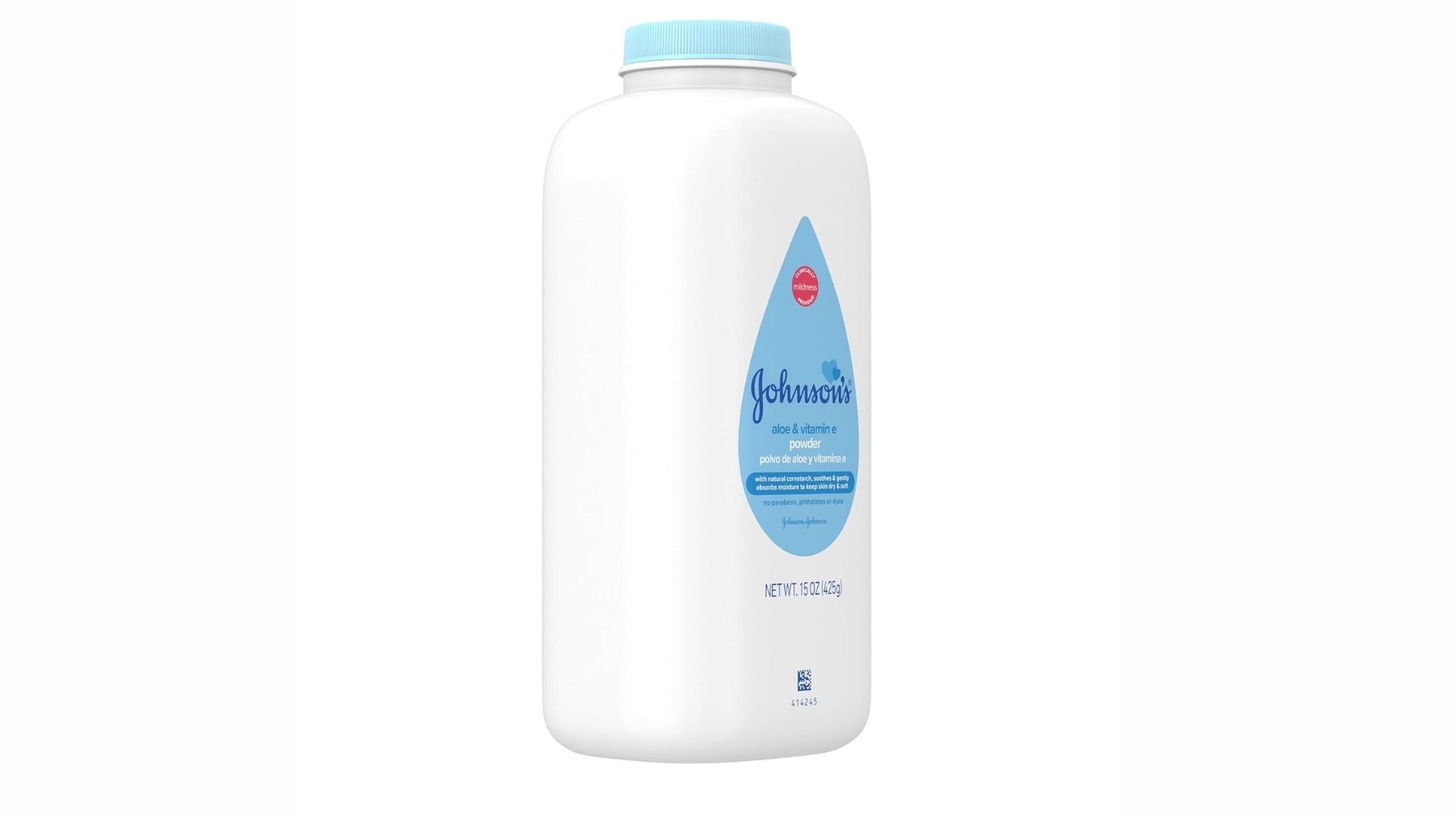
Safety remains a top concern for parents using baby powders. Johnson’s Baby Powder has faced scrutiny over potential health risks, primarily due to talc. Research has examined long-term exposure, prompting questions such as, “Is Johnson’s Baby Powder safe for newborns?” Despite controversy, scientific studies suggest that proper use reduces risks for infants. Parents are advised to avoid inhalation and excessive application.
Talc-free baby powder options address these concerns by providing similar moisture absorption without talc. Many families search “Johnson’s Baby Powder 2025” to ensure modern formulas meet updated safety standards. Expert reviews highlight that occasional, correct use of talc-based Johnson’s Baby Powder remains generally safe for infants. However, alternatives appeal to parents seeking extra reassurance and peace of mind.
Consumer reports and pediatric guidance often recommend minimal use, applying powders externally and avoiding direct inhalation. Johnson’s Baby Powder review frequently emphasizes safe handling techniques, promoting comfort without compromising infant health. Families can compare talc-based powders with cornstarch and natural Johnson’s Baby Powder alternatives to make informed choices.
Overall, safety depends on careful use and awareness. Johnson’s Baby Powder 2025 continues to offer a trusted option when parents follow proper precautions. Knowledgeable application and consideration of talc-free baby powder alternatives help parents feel confident. Scientific research combined with modern product updates ensures families have safe, effective options for moisture control and gentle skin care. Parents can enjoy the benefits while minimizing concerns, keeping babies comfortable and healthy every day.
Potential Health Risks of Talc-Based Powders
Talc-based powders have faced scrutiny due to concerns about respiratory and long-term health risks. Parents often research “Johnson’s Baby Powder side effects” to understand potential impacts. Studies suggest that inhaling talc particles may irritate lungs, especially in newborns and infants. While occasional use is generally considered safe, consistent exposure has raised caution among caregivers.
Other potential risks include rare allergic reactions or skin sensitivities. Families with sensitive babies may experience mild irritation or redness from talc-based powders. Pediatricians advise minimal application, careful use around the face, and avoidance of inhalation. Talc-free baby powder alternatives provide similar dryness benefits without these concerns, making them appealing for cautious parents.
Many parents compare Johnson’s Baby Powder with cornstarch-based powders or natural Johnson’s Baby Powder alternatives to ensure safety. Knowledge about possible side effects empowers caregivers to make informed decisions for infant skin health. Understanding these risks does not eliminate the product’s benefits but encourages responsible use. Johnson’s Baby Powder 2025 continues to offer trusted formulas while also promoting talc-free baby powder versions to address health concerns.
Parents looking for Johnson’s Baby Powder alternatives often prioritize natural, hypoallergenic ingredients. Modern versions aim to provide moisture absorption, softness, and comfort without talc. By balancing benefits and potential risks, families can choose the best baby powder for their children. Awareness, proper application, and informed selection help parents maintain safe, effective care, ensuring infants stay dry, comfortable, and healthy.
Benefits of Using Johnson’s Baby Powder
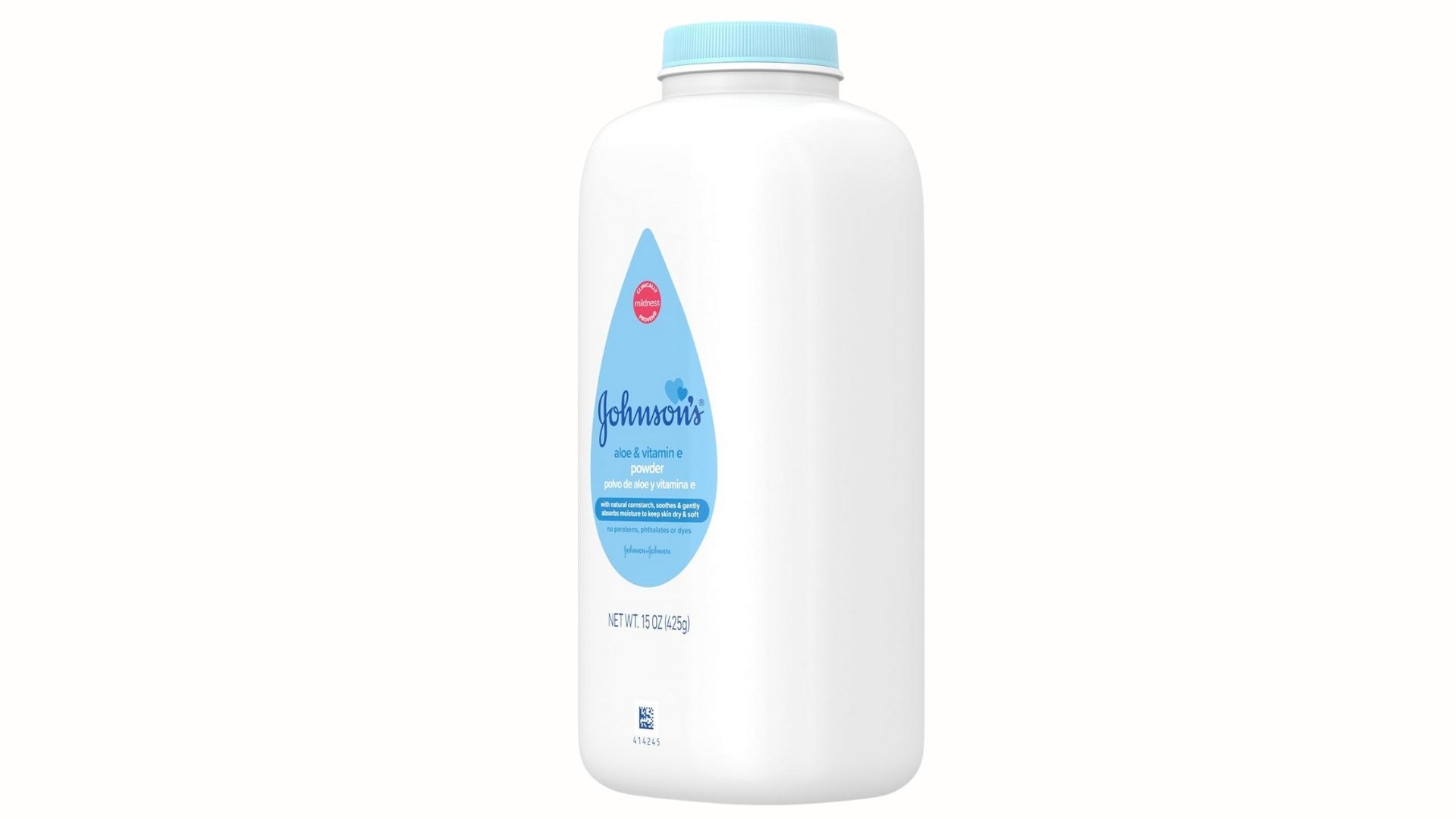
Johnson’s Baby Powder offers multiple benefits, including moisture absorption, friction reduction, and softness for delicate infant skin. Many parents continue using it because it helps prevent diaper rash, keeps babies dry, and leaves skin feeling smooth. Its mild fragrance adds freshness without overwhelming sensitive noses.
Parents searching “Johnson’s Baby Powder review” often highlight its convenience, long-lasting effects, and familiarity in everyday baby care routines. Talc-based or talc-free baby powder versions allow families to choose formulas that suit their preferences and safety concerns. Talc-free baby powder is particularly popular for sensitive skin, providing similar benefits while reducing potential health risks.
Another advantage is versatility. Johnson’s Baby Powder can be used on infants, toddlers, and even adults for moisture control, comfort, or chafing prevention. Many families consider it a practical, multi-purpose addition to their home. Online reviews and personal experiences confirm its effectiveness, reliability, and gentle nature.
Parents also appreciate the brand’s long-standing reputation, which adds trust and reassurance. Comparisons with alternatives often emphasize its consistent performance, soft texture, and ease of application. Johnson’s Baby Powder 2025 continues to meet these expectations while offering updated formulas to address modern safety considerations.
In addition to protecting skin and preventing irritation, the powder enhances comfort, keeps babies dry for longer periods, and minimizes friction-related discomfort. Its enduring popularity is a testament to its benefits, convenience, and ability to adapt to evolving consumer safety needs in 2025.
How to Use Johnson’s Baby Powder Safely
Safe use of Johnson’s Baby Powder is critical to minimize potential health risks. Parents should avoid direct inhalation, as talc particles can irritate the lungs. Applying the powder externally and sparingly ensures comfort without exposing infants to unnecessary risks.
Many families search “Johnson’s Baby Powder instructions” to learn safe application techniques. Experts recommend sprinkling the powder on hands first, then gently patting it onto the skin rather than shaking directly over the baby. Talc-free baby powder alternatives reduce inhalation concerns while maintaining moisture absorption.
Parents should avoid applying near the face or in areas where breathing may be affected. Regular diaper changes and gentle cleansing before powder application improve effectiveness, enhance comfort, and maintain skin health. Johnson’s Baby Powder 2025 emphasizes these precautions in modern guidance.
Additionally, using clean, dry hands ensures the powder remains free from contamination. Some parents combine it with soft clothing to reduce friction and chafing, enhancing comfort throughout the day. Online reviews often note that careful, responsible use delivers the benefits of moisture control and gentle protection safely.
By following simple steps—moderate use, indirect application, and avoiding inhalation—families can enjoy the advantages of Johnson’s Baby Powder while reducing health concerns. Knowledgeable application, along with consideration of talc-free baby powder, allows parents to feel confident in their choice. Consistent safe practices ensure babies stay dry, comfortable, and healthy without compromising safety.
Johnson’s Baby Powder vs. Competitors: Which Is Better?
When choosing baby powder, parents often compare Johnson’s Baby Powder to other brands. Many search “Johnson’s Baby Powder vs cornstarch powder” to determine which is safer and more effective. Johnson’s Baby Powder remains popular for its trusted reputation, gentle formula, and long-lasting moisture control. Competitors may offer natural or talc-free baby powder alternatives that appeal to safety-conscious parents.
Talc-free options promise similar benefits without the concerns associated with talc. Brands like Burt’s Bees, Babyganics, and others focus on natural ingredients, hypoallergenic properties, and environmentally friendly formulations. Parents often weigh these alternatives against Johnson’s Baby Powder review, which highlights convenience, softness, and fragrance.
Another consideration is price and availability. Johnson’s Baby Powder is widely available online and in stores, making it accessible to many families. Competitors may have limited distribution or higher prices for natural formulations. Families compare online reviews, user experiences, and safety data to choose the right option.
Effectiveness is another key factor. Johnson’s Baby Powder absorbs moisture quickly, reduces friction, and prevents diaper rash, which many parents value over alternative brands. Some competitors match these benefits, but opinions vary depending on skin sensitivity and infant reactions.
Ultimately, parents balance safety, effectiveness, and convenience when choosing between Johnson’s Baby Powder and competitors. By comparing ingredients, performance, and reputation, families can make informed decisions. Johnson’s Baby Powder 2025 continues to hold its place due to brand trust, consistent results, and modern formulations designed to meet evolving safety concerns while offering superior comfort for infants.
Customer Reviews and Real Experiences in 2025
Parents frequently search “Johnson’s Baby Powder review” to hear real experiences before purchasing. Many positive reviews highlight its gentle texture, mild fragrance, and effectiveness at keeping babies dry throughout the day. Families praise its ability to prevent diaper rash and reduce friction on sensitive skin.
Some parents note that Johnson’s Baby Powder 2025 offers updated formulas, including talc-free baby powder options. These appeal to families concerned about potential health risks. Online forums and parenting blogs frequently discuss user experiences, offering insights into pros and cons of Johnson’s Baby Powder and alternatives.
Negative reviews mostly focus on potential side effects, including mild irritation or inhalation concerns. These comments encourage safe application techniques, such as sprinkling powder on hands first and applying sparingly. Many parents emphasize the importance of following instructions to ensure comfort and safety.
Comparisons with Johnson’s Baby Powder alternatives also appear in reviews. Parents who try traditional Johnson’s Baby Powder alongside natural or cornstarch-based options often mention differences in texture, fragrance, and moisture absorption. Real-life experiences provide valuable guidance for new parents.
Overall, customer reviews reflect a mix of trust, convenience, and cautious use. Johnson’s Baby Powder 2025 continues to be favored for its longstanding reputation, reliable performance, and adaptability to modern safety expectations. Parents consistently recommend proper usage and consideration of talc-free baby powder alternatives to ensure infants remain comfortable, dry, and healthy.
Expert Opinions on Baby Powder Safety
Pediatricians and dermatologists emphasize that safe use is key when using baby powders. Experts often recommend Johnson’s Baby Powder with precautions, particularly for talc-based versions. Avoiding inhalation and applying sparingly are standard guidelines. Many parents search “Is Johnson’s Baby Powder safe?” to understand professional advice before use.
Talc-free baby powder alternatives are also endorsed by experts, especially for infants with sensitive skin. Natural ingredients reduce potential respiratory and dermatological concerns while maintaining moisture control and comfort. Experts advise comparing formulas to match individual infant needs.
Johnson’s Baby Powder review often highlights expert opinions regarding ingredient safety, effectiveness, and practical use. Professionals stress that occasional, careful application remains generally safe for healthy infants. They recommend avoiding excessive amounts and directing powder away from the face.
Medical studies suggest talc-based Johnson’s Baby Powder carries minimal risk when used properly, but caution is warranted. Many experts advocate for talc-free baby powder as a preventive measure. Parents are encouraged to research products, check labels, and consult pediatricians when making decisions.
By integrating expert guidance with product knowledge, parents can make confident choices. Johnson’s Baby Powder 2025 continues to be safe under professional recommendations, especially when used responsibly. Combining expert advice with modern formulations and Johnson’s Baby Powder alternatives ensures infants remain healthy, comfortable, and free from irritation, giving parents peace of mind while using this iconic baby care product.
Natural and Talc-Free Alternatives to Johnson’s Baby Powder
Many parents now seek Johnson’s Baby Powder alternatives to reduce potential health risks. Cornstarch-based powders, oat-based formulas, and natural ingredient blends provide moisture absorption and gentle care for sensitive skin. Searches like “talc-free baby powder” highlight the growing interest in safer options.
Talc-free baby powder versions maintain the benefits of traditional powders without introducing concerns about inhalation or long-term exposure. These alternatives are widely available online and in stores, offering convenience for safety-conscious families. Many parents also prefer organic and hypoallergenic ingredients for newborns.
Comparing Johnson’s Baby Powder to natural options shows differences in texture, fragrance, and absorption. While Johnson’s Baby Powder 2025 offers trusted results, Johnson’s Baby Powder alternatives appeal to parents prioritizing natural care. Reviews and user experiences often favor these products for peace of mind and skin safety.
Natural powders can be applied similarly to traditional formulas, gently patting onto dry skin while avoiding inhalation. They often contain plant-based ingredients, vitamins, and soothing agents that enhance comfort. Parents searching “best baby powder for infants” may find these alternatives particularly appealing.
Overall, talc-free baby powder and natural alternatives complement or replace traditional Johnson’s Baby Powder, providing parents with safe, effective choices. Families can select products based on infant skin sensitivity, safety preferences, and desired benefits, ensuring babies remain dry, comfortable, and irritation-free in 2025.
Tips for Parents: Choosing the Right Baby Powder
Selecting the right baby powder requires understanding ingredients, safety, and effectiveness. Parents often search “best baby powder for infants” and compare Johnson’s Baby Powder vs cornstarch powder to determine suitability for sensitive skin. Talc-free baby powder is preferred for cautious caregivers seeking safe alternatives.
When choosing a powder, consider texture, fragrance, and moisture-absorbing properties. Johnson’s Baby Powder 2025 offers both talc-based and talc-free baby powder formulas, allowing parents to select based on comfort and safety. Checking product labels for ingredients and potential allergens is essential.
Application method also affects safety. Experts recommend applying powder to hands first, then gently patting it onto dry skin. Avoiding the face and ensuring minimal inhalation reduces risks. Talc-free baby powder options offer additional reassurance for infants prone to respiratory concerns.
Parents should also consider brand trust and customer reviews. Johnson’s Baby Powder has a long-standing reputation, while natural Johnson’s Baby Powder alternatives provide modern safety features. Comparing pros and cons, price, and availability helps families make informed choices.
Finally, consider frequency and context of use. Some powders are better for diaper changes, while others suit daily moisture control. Understanding specific needs ensures optimal care. By following these tips, parents can confidently choose the right baby powder, balancing comfort, safety, and effectiveness for their infants.
Final Verdict: Is It Worth Using in 2025?
Johnson’s Baby Powder remains a popular choice in 2025 due to its trusted reputation, gentle formula, and effectiveness. Parents searching “Johnson’s Baby Powder review” often highlight its moisture absorption, softness, and ability to prevent diaper rash. Talc-free baby powder alternatives offer similar benefits with added safety for cautious families.
Considering safety, ingredients, and performance, Johnson’s Baby Powder 2025 remains relevant. Proper use, minimal inhalation, and careful application ensure infants benefit from comfort and dryness without health risks. Many parents also compare it to natural Johnson’s Baby Powder alternatives to assess suitability for sensitive skin.
Real-life experiences indicate reliability and convenience, while expert opinions confirm safe use under recommended guidelines. Families weighing pros and cons can select talc-based or talc-free baby powder versions based on personal preferences, safety considerations, and infant skin sensitivity.
Johnson’s Baby Powder continues to offer versatility, trusted results, and accessibility online or in stores. Parents can rely on its performance while exploring modern alternatives for added reassurance. Its long-standing popularity demonstrates effectiveness and consumer confidence.
In conclusion, Johnson’s Baby Powder is still worth using in 2025 when applied responsibly and chosen according to individual infant needs. Families can enjoy benefits such as dryness, softness, and comfort, while safely navigating evolving safety concerns and Johnson’s Baby Powder alternatives. With proper precautions, this iconic product remains a valuable addition to infant care routines, delivering reliable results and peace of mind for parents worldwide.
Read more about the Alpine Muffy Baby Review: Safe and Comfortable Ear Protection for Your Little One
FAQs
Yes, when used sparingly and applied externally, avoiding inhalation. Talc-free baby powder options are safer for sensitive infants.
Classic formulas use talc, while modern versions include talc-free baby powder and natural ingredients for moisture absorption.
Rarely, but sensitive infants may experience redness. Test a small area first or use talc-free baby powder alternatives.
Talc absorbs moisture but carries inhalation concerns; cornstarch provides similar benefits without talc-related risks. Johnson’s Baby Powder vs cornstarch powder comparisons highlight these differences.
Sprinkle on hands first, apply sparingly, avoid the face, and minimize inhalation.
Talc-free baby powder reduces health risks while maintaining moisture control and softness for sensitive skin.
Yes, Johnson’s Baby Powder can prevent friction, absorb moisture, and provide comfort for skin irritation.
Johnson’s Baby Powder is available on Amazon, Walmart, and other major online retailers.
Yes, Johnson’s Baby Powder alternatives with cornstarch, oats, or plant-based ingredients offer safe, hypoallergenic options.
Pros: soft, moisture-absorbing, trusted brand. Cons: inhalation risk, potential irritation, talc concerns; talc-free baby powder alternatives address these issues.
Share on Social Media
Related Articles
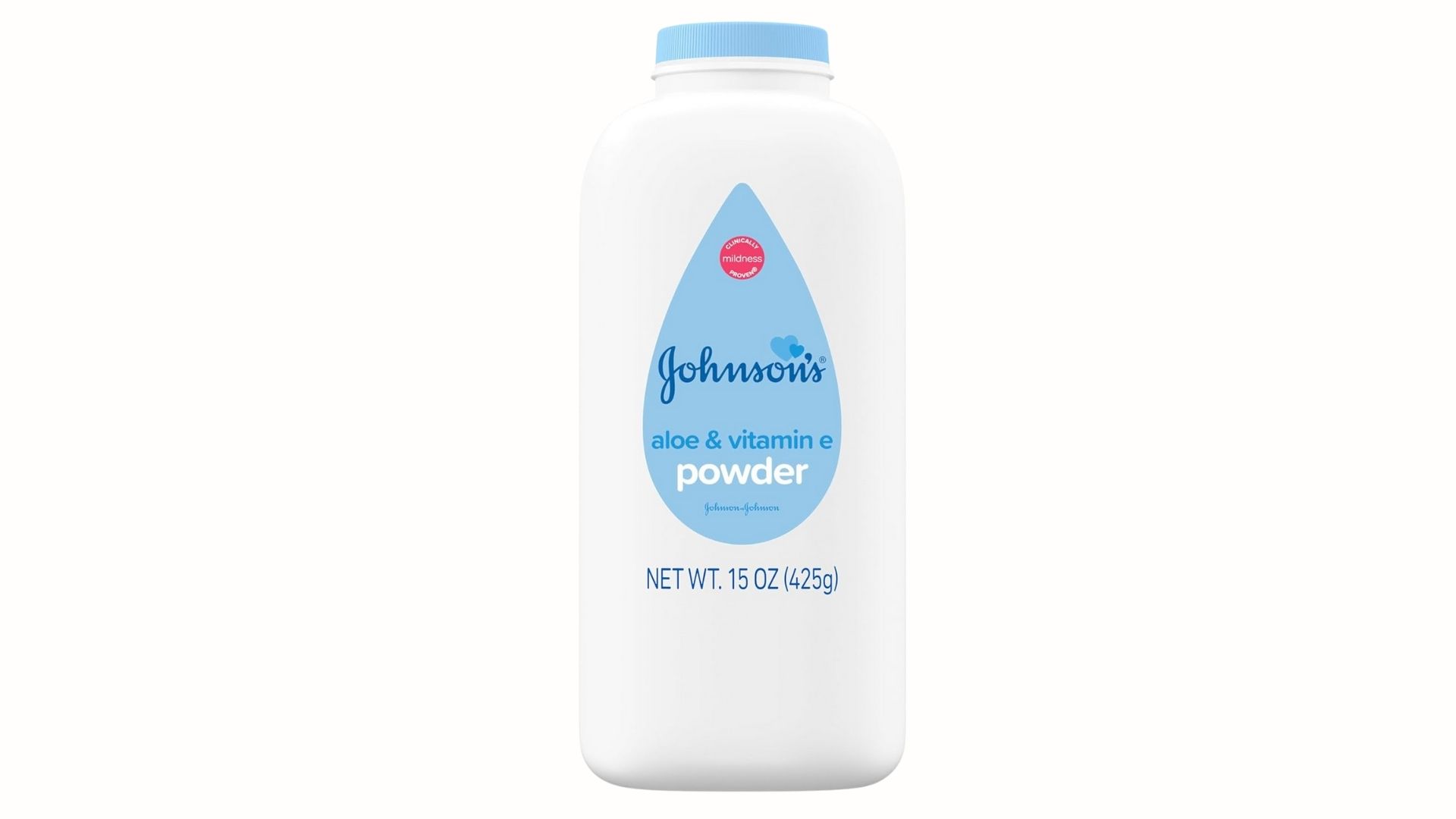
Johnson’s Baby Powder Review: Is It Still Safe and Worth Using in 2025?
Discover if Johnson’s Baby Powder 2025 is safe. Reviews, talc-free alternatives, ingredients, pros & cons, and tips for sensitive infant skin

Alpine Muffy Baby Review: Safe and Comfortable Ear Protection for Your Little One
Protect your baby’s hearing with Alpine Muffy Baby – comfortable, hypoallergenic, and adjustable earmuffs for babies in noisy environments.

Babba Baby Bottle Cooler and Warmer Review: The Ultimate Solution for On-the-Go Parents
Babba Baby Bottle Cooler and Warmer keeps milk fresh and perfectly heated. Portable, safe, and ideal for parents feeding babies on-the-go.
